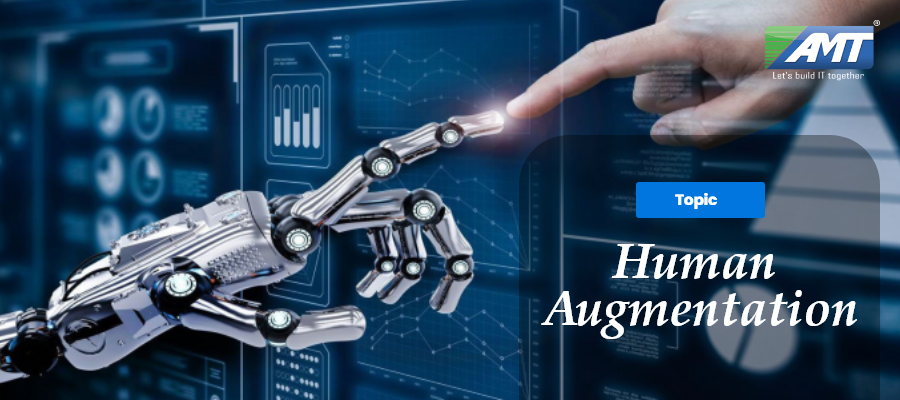Human augmentation is a field of research that aims to enhance human abilities through medicine or technology. This has historically been achieved by consuming chemical substances that improve a selected ability or by installing implants which require medical operations. Both of these methods of augmentation can be invasive. Augmented abilities have also been achieved with external tools, such as eyeglasses, binoculars, microscopes or highly sensitive microphones. Lately, augmented reality and multi-modal interaction technologies have enabled non-invasive ways to augment human.
Human augmentation is an interdisciplinary field that addresses methods, technologies and their applications for enhancing sensing, action and/or cognitive abilities of a human. This is achieved through sensing and actuation technologies, fusion and fission of information, and artificial intelligence (AI) methods.
Human augmentation can further be divided into three main categories of augmentation:
Augmented senses (aka enhanced senses, extended senses) are achieved by interpreting available multisensory information and presenting content to the human through selected human senses. Sub-classes include augmented vision, hearing, haptic sensation, smell, and taste.
- Augmented action is achieved by sensing human actions and mapping them to actions in local, remote or virtual environments. Sub-classes include motor augmentation, amplified force, and movement, speech input, gaze-based controls, teleoperation, remote presence, and others.
- Augmented cognition (aka enhanced cognition) is achieved by detecting human cognitive state, using analytical tools to make a correct interpretation of it, and adapting computer’s response to match the current and predictive needs of the user (e.g., providing stored or recorded information during natural interaction).
Various other concepts and models in computer science, such as ubiquitous computing, perceptual user interfaces, wearable computing, augmented reality, virtual agents, connected devices, robots, and human-computer integration may also provide blueprints for the future in human augmentation. All the concepts and models have a slightly different scope from each other, however, they all focus on different aspects and features of the same augmented-human future.
In the following section, we discuss the state-of-the-art in different areas of human augmentation: augmented senses, augmented action, and augmented cognition. This is followed by our proposed model for wearable augmentation, a call for research and potential benefits and applications. And lastly, we take a look at various aspects of ethical and societal issues.
There is an extensive amount of related research, as introduced in the previous Section. However, human augmentation is missing architectures and models that integrate individual contributions as a holistic approach that could be further used as a basis for practical applications. Next, we present a model for wearable augmentation: augmenting human senses, action and cognition through wearable technology. The starting point is that the technology will enhance human abilities directly, not through an external tool that is manipulated through an interface. Interaction should be as close to actual human action as possible, which leads to a need for tracking human activities used as inputs for the augmentation system.
-
Sensing technologies detect the environment, objects, and events. These include pattern recognition and other computer vision methods, auditory sensors, spatial, thermal and movement sensors, multispectral cameras, and touch, olfactory and gustatory sensors.
Multisensory presentation technologies support attention, memory, and perception; it is achieved through light-weight multimodal mixed reality glasses, crossmodal information presentation, and wearable accessories. It applies different human senses: sight, hearing, touch, olfaction, gustation as channels to mediate augmented sensing and feedback on augmented actions.
- Human activity measurement technologies are based on different wearable sensors. Human activities are recognized as inputs through, for example, speech recognition, motor activity tracking, eye tracking, and force and touch input. Based on this low-level information, human activities are modeled at a higher level.
- Actuation technologies are used to affect the environment as directed by the human. These include different kinds of visual displays, audio equipment, haptic actuators as well as smell and taste generators. In immersive environments, also the sense of balance may be affected through the generation of forces and human pose.
- Ubiquitous information services and artificial intelligence technologies will provide access to networked information services, internet of things and artificial intelligence support. This will enable to develop personalized AI extensions that can assist and autonomously support a variety of tasks that users are unable or unwilling to perform.
The above is a brief about Human Augmentation. Watch this space for more updates on the latest trends in Technology.
